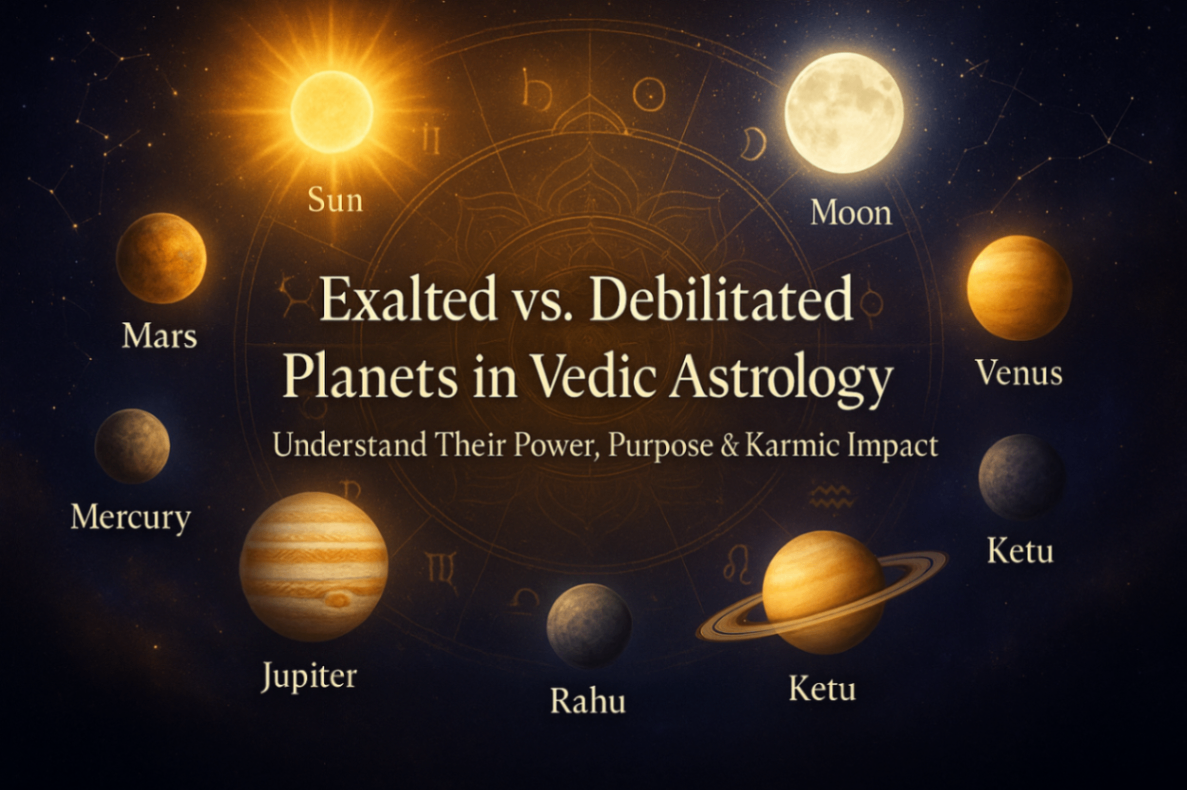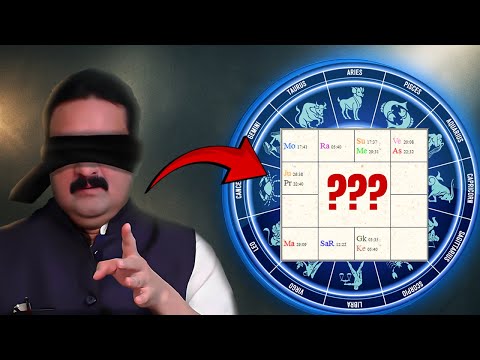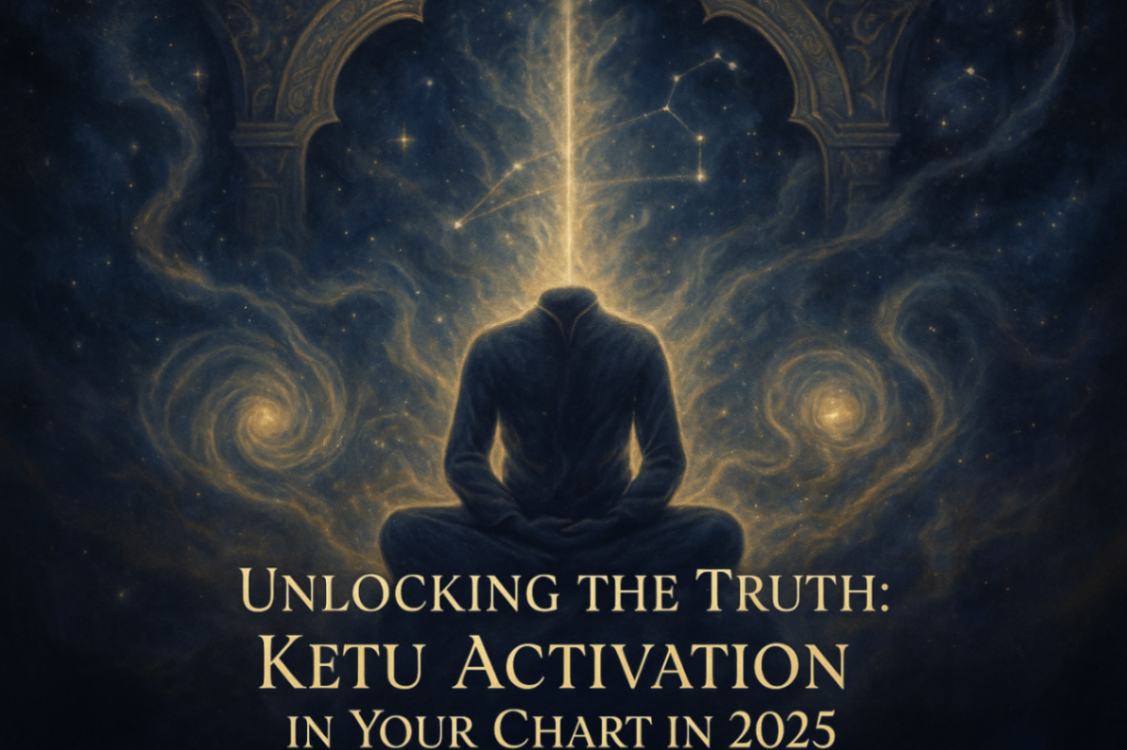Introduction: Why Birth Chart Reading Matters
In Vedic astrology, the birth chart (Janma Kundli) is a map of your karma. It holds the blueprint of your life—your purpose, struggles, growth, and destiny. But to unlock its full meaning, you must learn how to read birth charts accurately.
Understanding a chart isn’t just about memorizing combinations. It’s about pattern recognition, timing, and the ability to analyze dashas and transits within context.
1. Start with the Lagna (Ascendant)
The Lagna is the anchor of any chart. It represents the self—your physical body, character, and karmic beginning.
Note the Lagna sign and its lord.
Observe where the Lagna lord is placed. For example, if the Lagna lord is in the 4th house, it often indicates a soul meant for public service or legacy-building.
If 4th lord is in Lagna, the native may be born into a royal lineage, or have duties connected with society or tradition.
This placement is often seen in public figures, politicians, or those from influential lineages.
2. Examine House Lords and Their Exchange
Understanding house lordship and their exchanges is essential.
Key techniques:
A mutual exchange between the Lagna lord and 4th lord often results in public success or leadership.
When Jupiter and Venus connect with the Sun, political fame is likely.
If these planets relate to the Moon, the individual may rise as a prominent public figure.
Also, observe combinations like Mars-Rahu or Saturn-Ketu to identify transformative, disruptive or service-oriented lives.
3. Check Arudha Lagna for External Perception
Arudha Lagna shows how the world perceives you.
If Sun-Venus occupy Arudha Lagna, it indicates visibility and prestige.
When 10th lord or 7th lord is placed in Lagna, the person becomes a known figure in partnerships or career.
These placements influence career direction, public image, and political rise.
4. Understand Dasha Patterns to Decode Life Events
Dasha (planetary period) analysis is the most critical tool in Vedic astrology.
How to proceed:
Use the Moon sign as the Dasha Lagna.
Analyze what happens during the Mahadasha and Antardasha combinations.
Track events like career rise, humiliation, marriage, or power shifts.
Example Insight:
Moon Mahadasha with Rahu Antardasha may bring mental distress or intense change.
Mars-Rahu often brings sudden rise or military/political action.
Moon-Venus may trigger public or bureaucratic leadership roles.
5. Apply Transit Logic to Validate Events
Use Sun’s transit over natal planets to validate real-life events.
When Sun transits over Mars (8th lord in Lagna), life-changing events may occur.
For example, if Mars is at 24°, and Sun crosses this point in May, it may bring transformation, promotion, or downfall.
This technique works well when combined with dasha logic for deeper confirmation.
6. Note Outer Planets: Uranus, Neptune, Pluto
Though not traditionally part of Vedic astrology, outer planets play a strong psychological and transformational role when close to key house lords.
Uranus causes sudden breakthroughs.
Pluto signifies long-term power shifts.
Neptune may bring illusion or divine inspiration.
These planets intensify the dasha effects when closely aligned with natal planets.
7. Pay Attention to Gulika and Mandi
These shadow planets are often overlooked but crucial in prediction.
If Gulika or Mandi is in 3rd or 11th house, it can increase conflict resolution ability or group influence.
Their presence in 2nd or 3rd house can affect speech, wealth, or communication power.
When aligned with Dasha lords, they alter the karma delivery significantly.
8. Read the Chart from the Moon Lagna
The Moon shows your emotional landscape and mental tendencies.
Steps:
Create a second chart using Moon as the Lagna.
Re-analyze house placements, especially the 4th, 7th, and 10th houses.
Check which planet aspects the Moon—Rahu aspect indicates mental instability, while Jupiter gives wisdom.
Reading from Moon helps understand mindset, fears, and emotional triggers.
9. Connect Dashas with Real Events (Case Study)
Let’s understand this through an example:
Moon Dasha started → Person became a Junior Minister.
Moon-Rahu → Assigned to foreign colonies with high tension.
Moon-Saturn → Handled labor and dockyard reforms.
Moon-Mercury → Became Home Minister.
Moon-Venus → Elevated to Naval Chief Officer.
Mars-Rahu → Army role + humiliation.
Rahu Dasha → Withdrawal, isolation, writing period.
Jupiter Dasha → Returned as Prime Minister.
Each dasha and sub-dasha reveals a transformation point—career, failure, redemption.
10. Tips for Students Learning How to Read Birth Charts
Always read charts from Lagna, Moon, and Arudha for a 360° view.
Observe the purpose of the dasha, not just the planet.
Study real-life event timing with dasha + transit.
Spend at least an hour per chart. Don’t rush.
Look for patterns across charts and map them to Jaimini Sutras or Parashara rules.
Ask: What changed? When? Why?
This process builds your intuition, analytical power, and predictive accuracy.
Conclusion: The Secret Lies in Observation
If you wish to master how to read birth charts, you must go beyond surface-level analysis. The magic happens when you start connecting dashas, planetary dignity, house lordship, and event timelines with clarity.
A chart is not a puzzle to solve once—it’s a story that unfolds with time.


































